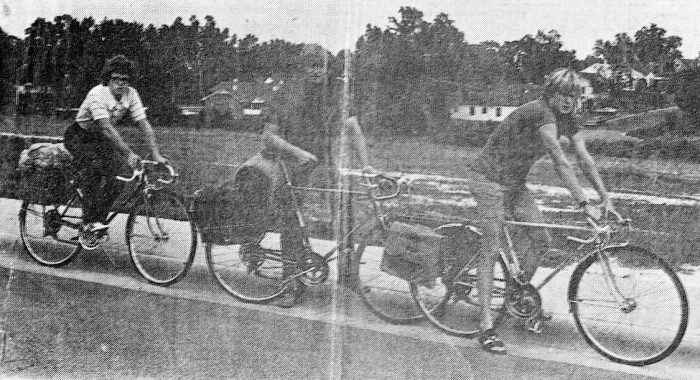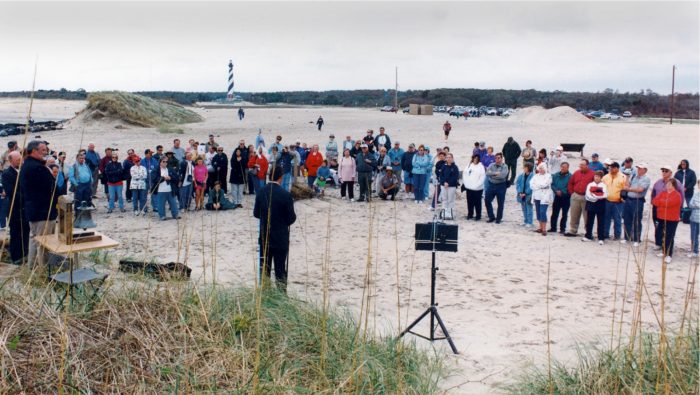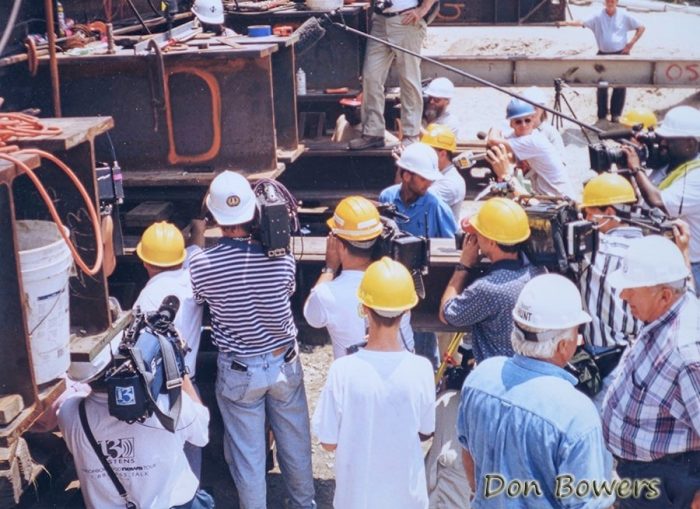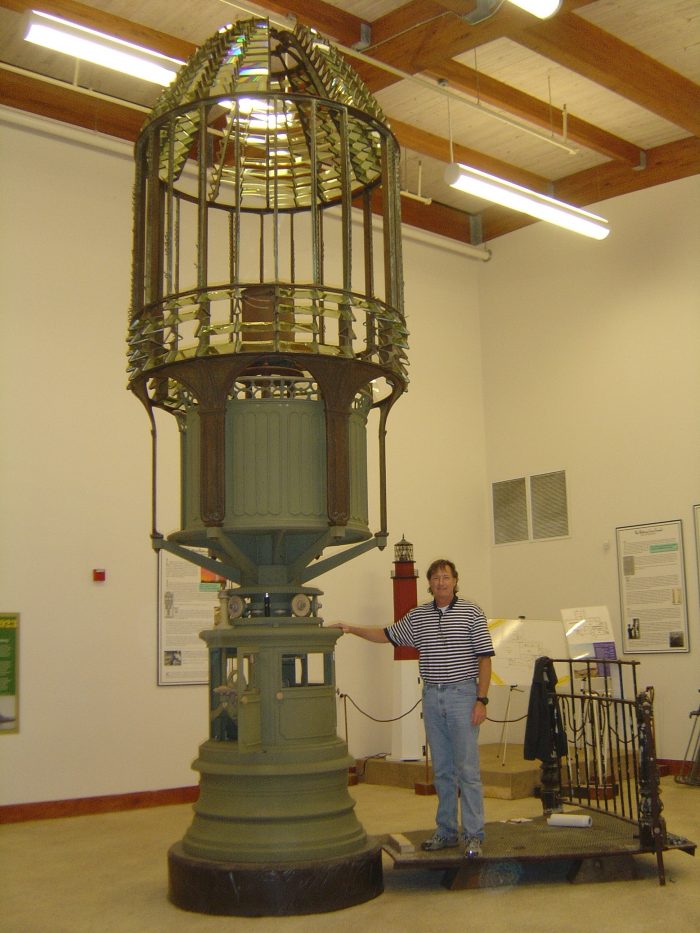
Too excited to sleep, we set out in the middle of the night. Our heavy, steel-frame, 10-speed bikes were overloaded—tents, sleeping bags, and too many clothes. But despite the weight, the first few miles seemed effortless. Soon, the city’s streetlights receded and, without headlights, we rode down the dusky center line of the rural road and headed east. Ahead in the dark unknown lay five days of open highway and miles of unforeseen challenges, unexpected delights, and indelible impressions. We were headed for Cape Hatteras!
The next 50 years would, for me, follow a comparable, circuitous, almost metaphorical path. Frequently I think of how little we are aware of the consequences of such turning points in our lives. It was on that two-wheeled odyssey to the Outer Banks on August 18-22, 1971, that I fell hopelessly in love with the history and lore of the North Carolina coast.
With our senior year about to begin at Rose High School in Greenville, North Carolina, my two best friends, Bob Thurber and Gary Snyder, and I decided to do something no one else had ever done (as far as we knew)—to ride our bicycles on a roundtrip clockwise circumnavigation of the Pamlico Sound. At a time when multi-day cycling tours were almost unheard of, we planned a five day ride from Greenville to Nags Head, Cape Hatteras, Ocracoke, Beaufort, Atlantic Beach, New Bern, and then home. We didn’t know if we could do it but we were going to try nonetheless.
We were adventurers, children of the tumultuous sixties, inspired by National Geographic stories of American expeditions to Mt. Everest, teenaged Robin Lee Graham’s solo sail around the world, and Jacques Cousteau’s explorations of the ocean’s depths. In March of that year, the three of us earned our NAUI diving certifications at East Carolina University. That summer we had searched for, and failed to find the World War II German U-boat U-352 sunk and undiscovered off Cape Lookout. Our summer was drawing to a close and we had time for one last adventure. The nation’s tallest brick lighthouse awaited us, as well as the location of the notorious pirate Blackbeard’s final battle.
The first day was a seemingly never-ending 90-mile, 17-hour ride to Lake Mattamuskeet, where our plans to camp along a nightmarish, mosquito-infested swamp were fortuitously interrupted by a kind wildlife ranger. He lead us to the lake’s old pumping station, at that time converted to a spartan but comfortable hunting lodge where we were given a free room, showers, a hearty supper and breakfast the next morning. Already, better angels were looking after us.

The next day was expected to be an even sterner test, a 70-mile ride to Oregon Inlet, taking us through North Carolina’s equivalent of the “far side of the moon”—the isolated stretch of US 264 between Engelhard and Mann’s Harbor where for 40 miles there was not a single service station, store, or habitation of any kind. We would be in dire straits in the event that we ran out of water or had an accident. And for those of you readers not of my generation, cell phones were the stuff of science fiction. Phone booths, which were few and far between, were our only means of communication.
Somehow we survived. After recuperating and resupplying back in civilization, we reached the waters of Croatan Sound and rode across the narrow (by today’s standards) William B. Umstead Bridge. Little could we have imagined amassed in the sound the 60 warships and more than 10,000 Union soldiers (including my great-great-grandfather) who participated in the furious assault of Roanoke Island 109 years earlier. Crossing the bridge we nearly had our one and only accident. A speeding Trailways bus brushed against us, almost knocking us over the low guard rail into the waters below.
Landing on Roanoke Island, we passed the sign welcoming us to the birthplace of English America. History seemed to be all around us. The seeds of my historical curiosities were then and there planted, my appetite for ancient unsolved mysteries whetted, and my resolve to learn more about this endlessly fascinating coast was forged. We rode onward.
By seven that evening, we wearily pedaled up to the entrance to the National Park’s Oregon Inlet Campground. “Sorry, if you don’t have a reservation you’ll have to ride back to Nags Head for accommodations because we’re fully booked,” said a ranger. “Are you kidding me, we just rode our bicycles two days to get here!” I thought, and very possibly said aloud. Once again, through the kind intercession of a part-time summer ranger who, during the school year was an assistant principal back home in Pitt County, we were given permission to pitch our tents behind someone’s camper. That night, we learned about ghost crabs—the hard way.
After a pancake breakfast at the Oregon Inlet marina, we rode south over the Bonner Bridge. I vaguely recall having assured my friends that there were no hills on our route which was proven wrong as we struggled to ascend the mountain-like bridge, barely turning the pedals of our heavy bikes. Soon after summiting the climb, one of us lost their pancakes over the side of the bridge.
Next, we began the long slog to Cape Hatteras, bucking a vigorous and unrelenting summer breeze out of the southwest. Blowing sand, not insects, stung our bare legs. This was the most frustrating day of the trip but eventually we rode up to the Cape Hatteras Lighthouse. “Let’s climb it,” I said. With incredulous looks, Bob and Gary followed me up the 269 steps to the top.
That was my first visit to the lighthouse. Many of my readers will know how significant it was to my future—four documentary films, one book, and numerous historical discoveries that have since contributed significantly to our knowledge of the history of the two sentinels that have marked the dangers of Diamond Shoals. Thirty-two years later, I would be invited to deliver the keynote address at the 200th anniversary of lighthouses at the cape as my mentor and good friend, the Outer Banks historian David Stick looked on. I could foresee none of that at the time, however.
From there, we rode on to Hatteras village and had a sumptuous fried seafood dinner at the Channel Bass restaurant and soon after learned that fried food and bike riding are incompatible. Fortunately, the ferry ride over to Ocracoke, our next overnight destination, gave us a brief chance to settle our stomachs. But upon the ferry’s arrival on the island of Ocracoke, I had to break the news to my companions that the island and the village of Ocracoke were two different geographic things. We had another 13 miles to go. They were not happy with me.
I had been looking forward to visiting Ocracoke for a few years. In 1968, I had seen for the first time the Disney movie, “Blackbeard’s Ghost” starring Peter Ustinov in the title role, alongside the incomparable duo of Dean Jones and Suzanne Pleshette. I had learned from the movie that Blackbeard had built a hotel atop a rocky, 100-foot-high cliff high above the bay where he fought his last battle. In real life, I knew, that was at Ocracoke and I couldn’t wait to stand atop that rocky cliff.
At the village’s Community Store, three old-timers were sitting in rockers and chatting about the latest news. “Excuse me, gentlemen,” I politely interrupted. “Could you please tell me how to find that 100-foot-high cliff overlooking the bay where Blackbeard was killed?” After they wryly glanced at each other, one man, with his thick hoi toide brogue, answered. “Son, you done come to the wrong place; hoighest point on this ‘ere oyland is about eight feet.” They all laughed lustily and returned to their own conversation. It was on that day that I first learned that movie theaters were not the best place to learn history.

I think it was also then and there that the memory and true history of the fearsome pirate latched onto me and never let go. How shocked I would have been (and those old-timers, too) had I known that someday I would write a book about Blackbeard, discover numerous facts about him previously unknown, and rescue the mortal remains of the QUEEN ANNE’S REVENGE’s barrel maker from captivity by the state so that he could be buried at the church he helped to build.
The first leg of the next day’s journey was the most fun. We pedaled the short distance from the Park Service campground (now the boat ramp) to the line of cars boarding the Cedar Island ferry. We rode right to the front of the line and walked our bikes aboard. In 1971, three teenaged, long-distance cyclists attracted a lot of attention and we chatted with the ferry’s crew members and passengers. We were celebrities during the entire two-and-a-half-hour passage.
Yet again I was oblivious of the remarkable history that has taken place in the waters of Ocracoke Inlet over five centuries. In time, however, I would fully appreciate the significance of Sir Richard Grenville’s visit there in 1585 and his seven-day circumnavigation of Pamlico Sound.
Meanwhile, off the stern of the ferry, the beguiling island of Ocracoke gradually disappeared below the horizon. I knew that as soon as I could I would return to the island and the next time I did, I was at the helm of my 24-foot sailboat. Ever since, each time I go there, I appreciate the island’s incomparable history more and more.
The second leg of the fourth day—the ride from Cedar Island to Beaufort—was nearly impossible because of the oppressive August heat and humidity. Even a headwind would have been preferable to waves of steam rising from the blistering asphalt. We persevered. By the end of the day we were generously hosted by the Welch family of Greenville at their Atlantic Beach summer cottage. Again, little could I have imagined that less than a mile and a half away, near the east end of Bogue Banks, was the wreckage of Blackbeard’s famous flagship. No one would know that for another 25 years
Our fifth and final day was an all-out sprint home. By then we were in shape as we had not done a lot of conditioning before we began the journey. Maybe it was the gravity of home that was drawing us near. Boy, did we fly—80 miles in five hours?

I cannot even begin to estimate how many times I’ve been to the Outer Banks since. It seems like it would be an exaggeration to say at least a thousand times, but I wouldn’t be surprised. In my imagination and in my dreams, I’ve certainly lived there over the centuries and have frequently traveled there through time with years of historical research and analysis.
When Verrazzano passed the Outer Banks in 1524, I feel like I was standing alongside him as he gazed upon Pamlico Sound and recorded in his log that he had discovered a shortcut to the Orient.
I have imagined that I was present during the three Walter Raleigh expeditions to the Carolina coast between 1584 and 1587.
I have been a witness to Blackbeard’s battle at Ocracoke, and the bombardment and amphibious assault of forts Hatteras and Clark during the Civil War.
I’ve witnessed the removal of the enormous Fresnel lens from the top of the first Cape Hatteras Lighthouse by Confederates in 1861.
I have stood awestruck by the historic lifesaving efforts of the victims of the EPHRAIM WILLIAMS in 1874, the singlehanded rescue of ten survivors from the shipwrecked PRISCILLA by Rasmus Midgett in August 1899, and the incredible valor of six Chicamacomico Coast Guardsmen who saved 41 of 52 British sailors from the torpedoed tanker MIRLO, also in August, but in 1918.
I feel like I was once seated on the aft thwart of the lifeboat from the torpedoed passenger-freighter CITY OF NEW YORK, amazed by the defiant courage of 28-year-old Desanka Mohorovicic as she gave birth to her son in a symbolic victory over Hitler’s murderous U-boat assault on merchant shipping in the western Atlantic in 1942.
There are just too many memories to share, too much history to recall, too many people from the past that I have met and befriended to tell you about here. Yes, I fell hopelessly in love with the history and lore of the North Carolina coast and it is my hope that my life’s adventure will inspire new generations of historians.
And it all began with a bike ride fifty years ago.


